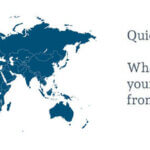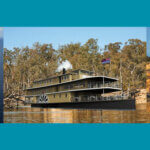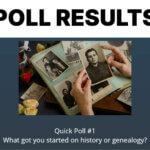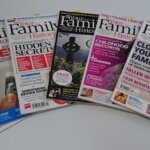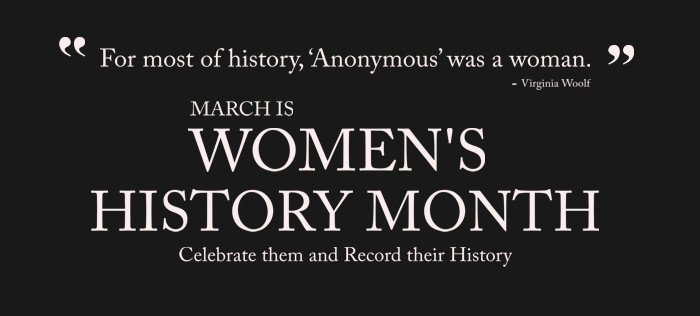
Women’s History Month is an month that highlights the contributions of women to events in history and society. Celebrated during March in Australia, the United States, the United Kingdom, and Canada, it corresponds with International Women’s Day which is held on March 8th.
“One this day [in the US] in 1987, Congress passed a resolution declaring March as Women’s History Month. This month, we celebrate the women who fought, took risks, and stood up for what was right. We celebrate their legacy, and continue to fight.”
As researcher’s we know the important role that our women ancestors played in our history, and maybe even in the wider community’s history. Without their contribution to life, and dealing with all of life’s hardships along the way, we wouldn’t be.
RESEARCH THEM
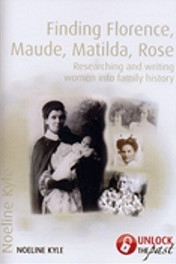 Finding Florence, Maude, Matilda, Rose: Researching and Writing Women into Family History
Finding Florence, Maude, Matilda, Rose: Researching and Writing Women into Family History
by Noeline Kyle
This book sets out how you can easily trace your female ancestors in public and private sources; how you can use the internet and new technologies to do the research, and how to access and find new online indexes, special collection and lists of women’s research and resources.
printed book – $16.00
ebook download – $9.95

Women’s Lives: Researching Women’s Social History 1800-1939
by Jennifer Newby
Women’s lives have traditionally gone unrecorded in history. But housewives, factory girls and servants all had their own distinctive voices, and, if you know where to look, there are plenty of sources to explore. If you want to trace female ancestors or simply discover more about how women lived in the past, then this book is ideal to help you get started with your own research.
printed book – $39.95
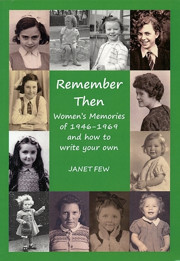 Remember Then: Women’s Memories of 1946-1969 and How to Write Your Own
Remember Then: Women’s Memories of 1946-1969 and How to Write Your Own
by Janet Few
This 24 year between 1946-1969 period was one of tremendous change in almost every area that they investigated. During this time, the country moved from liberty bodices to mini skirts and from ration books to ready meals. It saw the emergence of youth culture, the comprehensive education system, conspicuous consumerism and feminism; the Britain of 1969, was very different to that of 1946. So as you read through, and are nodding in agreement with things, remember the best thing you can do for your ancestors is to write your own memoirs. This book includes questions at the end of each chapter, which you can fill in as a starting point.
printed book – $39.95
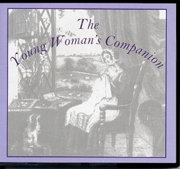 The Young Woman’s Companion
The Young Woman’s Companion
A fascinating book on what a young woman of the 1860s should know: rules for conversation, advantages of industry, domestic economy, beauty, love and courtship, choosing a husband, female dress, rules for matrimonial happiness, duties of a married woman, the benefits of adversity, directing female servants, managing a family, marketing, cookery, and much more.
CD-ROM – $22.50
ebook download – $9.95
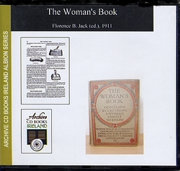 The Woman’s Book
The Woman’s Book
First published in 1911 and republished here on fully searchable CD-ROM is “The Woman’s Book: Contains Everything A Woman Ought to Know”. Containing more than 700 printed pages, this self-help manual for household management was, in its day, at the forefront of advice for women. Although the advice given is now, in the main obsolete and even offensive, books such as this brought into the open many subjects that had been hidden away in Victorian Britain. Appealing to the middle-class woman of a certain means, The Woman’s Book provides details on every aspect of household management, from money, to childcare, illness and entertainment.
CD-ROM – $21.50
WRITE ABOUT THEM
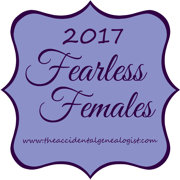 Whether you are a geneablogger or not, you might be interested in taking part in Lisa Alzo’s “Fearless Females Blog Challenge“. She has come up with 31 prompts, one for each day during March, to think about and write about your female ancestors. Here’s just a few to get the idea …
Whether you are a geneablogger or not, you might be interested in taking part in Lisa Alzo’s “Fearless Females Blog Challenge“. She has come up with 31 prompts, one for each day during March, to think about and write about your female ancestors. Here’s just a few to get the idea …
– Do you have a favourite female ancestor?
– Post a photo of one of your female ancestors.
– Do you share a first name with one of your female ancestors?
– Did one of your female ancestors leave a diary, journal, or collection of letters?
– Social Butterfly? What social organizations or groups did your mother or grandmother belong to?
It’s a great way to get you writing either publicly or privately about your ancestors.
SHARE THEM
If you’re on social media, why not share photos of your female ancestors. The State Library of Victoria are posting a photo from their collection on Facebook, highlighting one woman from Australian history each day. And don’t forget to hashtag it: #WomensHistoryMonth


